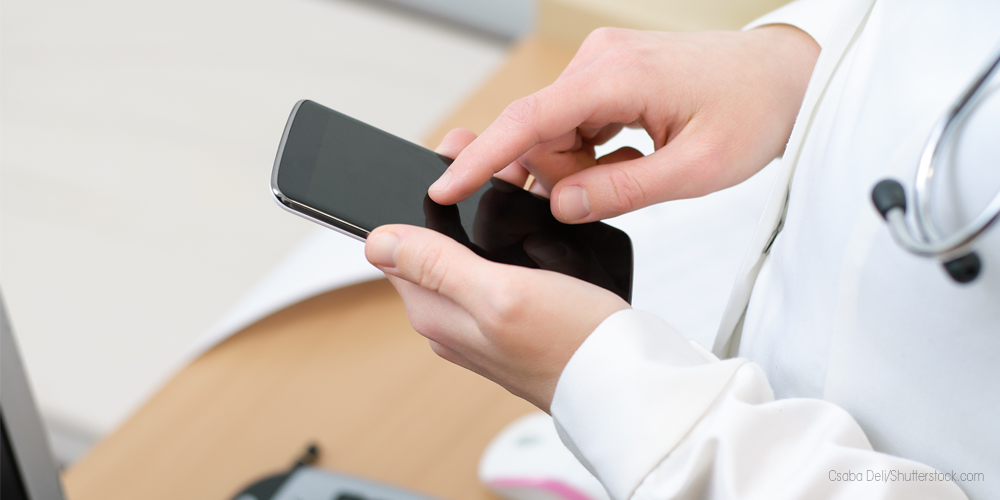Consumer Perceptions of Telehealth
Health execs should consider consumers’ desires as they work to tailor their telehealth programs to ensure healthy adoption rates, and ultimately to drive improved outcomes.

A national consumer survey has revealing findings about telehealth awareness and adoption.
American Well, which offers telemedicine services for health systems, health plans, employers, and physicians, commissioned Harris Poll to conduct an online study among more than 2,000 adults to measure usage and sentiments toward telehealth. The results are weighted to be representative of the American adult population across standard demographics.
Key highlights include:
- 66% of consumers are willing to use telehealth, and 8% have had a video visit
- A growing number of consumers (25%) would switch their primary care physician to one who offered telehealth. This is up from 20% in 2017.
- Of those using telehealth, 40% have Medicare or Medicaid and 39% have insurance through their employer (or their spouse's/partner's employer).
- Some consumers are uncertain about insurance coverage for telehealth (24% of those aged 35 to 44 years are uncertain if their insurance covers telehealth).
- When thinking about non-telehealth but related insights, the survey finds that seniors are most likely to seek low-acuity care at the ED (62% of seniors aged 65+ years would go to the ER for urgent care) vs. opting toward telehealth.
- 56% of consumers say they would use video visits for chronic disease check-ins.
- And finally, the data show that older generations are engaged with their health plan apps (of those who use a health app and are aged 55 to 64 years, 40% use a health plan app)-"this is interesting because it signals that many seniors are in fact ‘tech willing,’ an important baseline for telehealth adoption and use within this demographic,” says Peter Antall, MD, chief medical officer at American Well.
“Building telehealth programs that consumers 1) need and 2) are willing to adopt and find ongoing value in is important,” says Antall.
Related: Inpatient Telehealth Adoption Surges
“This survey brings to life insights across different demographics related to how people do use and want to use telehealth,” he says. “The data provides a critical lens for healthcare executives to look at their current telehealth efforts and ensure they align with consumer willingness and interest. For example, the data tells us that people-seniors in particular-see value in using telehealth for things like prescription renewals, chronic disease management, and follow-up care. While millennials, on the other hand, are signaling strong interest in telehealth-oriented behavioral health support. Healthcare executives should consider consumers’ desires and these data points as they work to tailor their telehealth programs to ensure healthy adoption rates, and ultimately to drive improved outcomes.”
Another important takeaway for healthcare executives is that the vast majority of people are willing to use telehealth.
“This presents a great opportunity for healthcare executives to capitalize on this willingness by not only launching new programs but executing associated education campaigns and efforts around telehealth’s availability, value, and impact,” says Antall. “Education is important because many patients don’t realize their doctor offers telehealth and some question whether their health plan covers telehealth.”
Finally, given that over half of consumers are open to using telehealth for chronic care, healthcare executives should consider using telehealth as a way to deliver more complete and effective care to these patients and as a potential lever to drive down chronic care costs, according to Antall.
Additional findings
- 70% of consumers say they have delayed seeking care for a health problem
- Technology is not a barrier to adoption-only 16% of seniors were concerned about technology
- 60% of seniors would be willing to use telehealth for surgery or in-patient follow-up
In the Scope of Virtual Health and the Future of “Website” Manner, Per Ateev Mehrotra
August 10th 2023Briana Contreras, an editor of Managed Healthcare Executive, had the pleasure of catching up with MHE Editorial Advisory Board Member, Ateev Mehrotra, MD, MPH, who is a professor of healthcare policy at Harvard Medical School and an Associate Professor of Medicine and Hospitalist at Beth Israel Deaconess Medical Center.
Listen